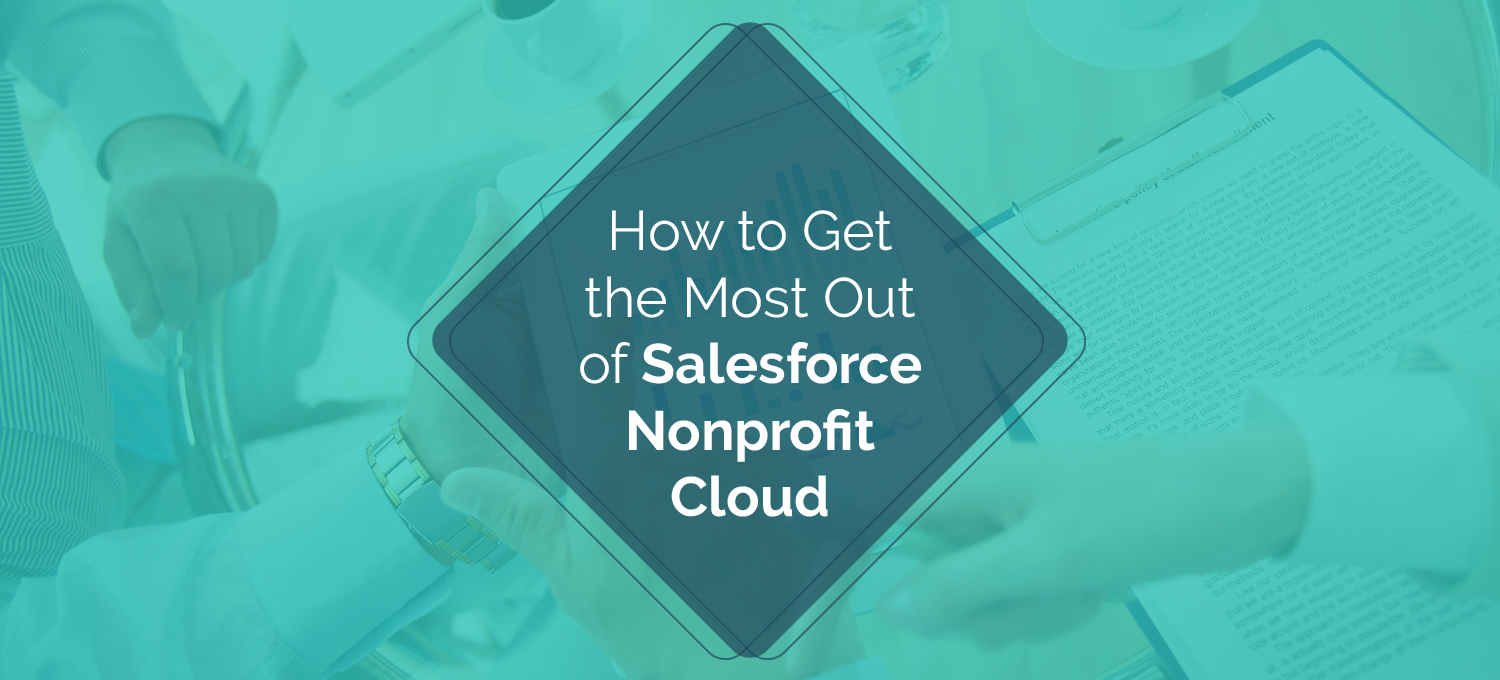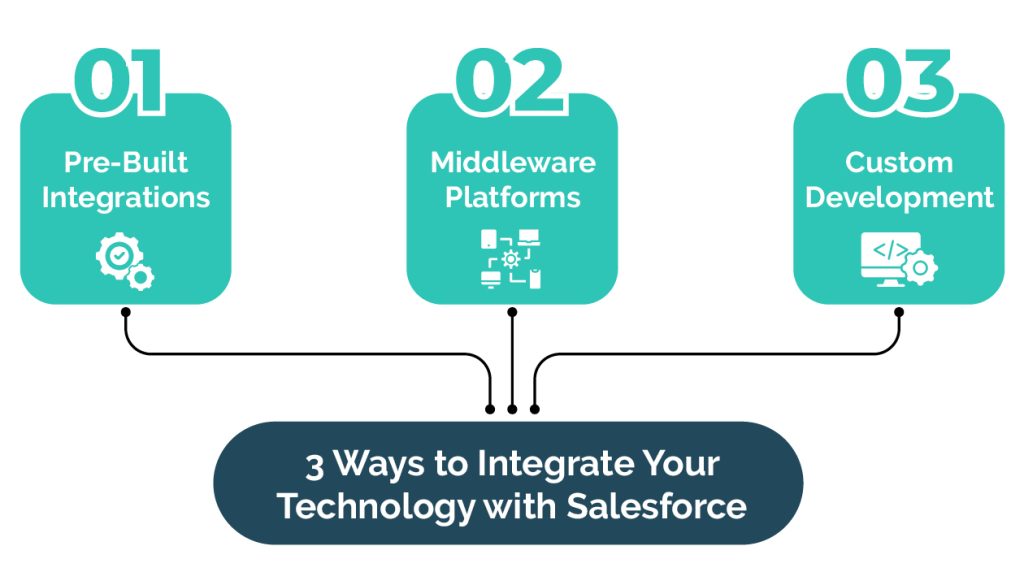
Like the Salesforce Nonprofit Success Pack (NPSP), Nonprofit Cloud was designed with nonprofit organizations in mind. But rather than layering nonprofit applications on top of the platform, Nonprofit Cloud is built into the core of Salesforce to give organizations access to innovation from various Salesforce industries.
Software like Nonprofit Cloud is an investment, and it’s critical that your nonprofit gets the highest return possible. We’ll explore the following strategies your nonprofit can use to boost its impact with Nonprofit Cloud:
- Define your objectives.
- Integrate your technology.
- Leverage automation.
- Take a constituent-centric approach.
With its extensive automation capabilities, analytics tools, and customization options, you may need help figuring out where to start with Nonprofit Cloud. Let’s begin by discussing how to identify a starting point.
Define your objectives.
As Fíonta explains, Nonprofit Cloud has a large catalog of capabilities for program and case management, fundraising and donor management, and grantmaking. To narrow your focus, outline your nonprofit’s top priorities and goals.
These objectives will determine which Nonprofit Cloud features and other Salesforce solutions your organization needs to use. Improving donor retention or boosting donations will involve a different set of tools than a goal, like increasing staff productivity and collaboration.
For example, your nonprofit’s goal could be to enhance its data hygiene and analysis practices. First, Nonprofit Cloud’s unified data model can consolidate supporter data from many sources into a single database. Eliminating data silos will save time, improve your data’s accuracy, and limit human errors. Next, set up customizable dashboards and reports to help you track and visualize data. Employ artificial intelligence tools like CRM Analytics to uncover trends, make predictions, and identify opportunities.
Integrate your technology.
Nonprofit Cloud can integrate seamlessly with the technology your nonprofit already uses—flow data from sources like your website, third-party apps, and marketing channels like social media.
These integrations make your operations more efficient and provide a comprehensive view of your supporters. Because data is more accurate and up-to-date, your nonprofit can enhance its fundraising, marketing, and donor engagement efforts.
There are many ways to integrate your tools with Salesforce, but some of the standard options include:
- Pre-built integrations: Many software solutions have built-in integrations with Salesforce. This is the easiest way to integrate your technology with Nonprofit Cloud. Pre-built or out-of-the-boxes don’t require coding and are already programmed and tested. All your nonprofit needs to do is enable the integration.
- Middleware platforms: If the solution doesn’t have a built-in integration, consider using a middleware platform like Zapier of MuleSoft. These tools function as connectors and automation tools between the Salesforce CRM and other software. Use them to automate data transfer from the external tool to your CRM without extensive coding.
- Custom development: More complex integration needs require custom integrations. These integrations require a developer to build a connection between the two tools using Salesforce Application Programming Interfaces (APIs). This approach is best for nonprofits with particular needs or complex integrations.
These integrations can be complicated, mainly if your nonprofit uses multiple tools. If you have complex needs, consider working with a technology consultant. These professionals have the expertise needed to set up integrations in a secure, organized manner.
Leverage automation.
Automation is the process of using technology to perform tasks with limited human input. This process can save staff time on repetitive tasks, streamline workflows, and reduce errors.
A certain rule, trigger, or condition typically executes a predefined set of actions or processes. For example, a supporter donates and triggers donation receipts and thank-you emails. Here are some of the ways nonprofits can use Salesforce Nonprofit Cloud to leverage automation:
- Donor management: Automate data entry, communications, and donor stewardship activities. Seamlessly flow data from forms to your CRM and update donor records. Create workflows to send thank-you emails and acknowledgment letters to volunteers and donors. For major donors, automatically send invitations to events and one-on-one meetings based on their interests.
- Marketing and communications: Reach and engage supporters in a timely, targeted manner. Send automated email series triggered by specific actions (e.g., a welcome email series triggered by a new supporter’s first donation). Or launch targeted advertising campaigns based on constituent interactions and actions.
- Volunteer management: Automate repetitive scheduling, recruitment, and communications tasks. This way, staff have more time for training, onboarding, and overseeing the volunteer program. Generate reports to track engagement levels and measure volunteers’ impact.
Secure leadership buy-in before implementing these automated workflows, and strategically place human checkpoints. Revisit automated workflows regularly to ensure they function correctly and are relevant to the user.
Take a supporter-centric approach.
Nonprofit Cloud’s data analysis and automation tools make it easy to provide personalized experiences.
To build these experiences using Nonprofit Cloud, consider:
- Segmenting and targeting supporters based on criteria such as donation history, interests, and engagement level. Target segments with custom appeals and messages.
- Sending personalized communications across channels like email and social media. Rely on segmentation and dynamic content to deliver messages that resonate with each supporter.
- Creating tailored donor journeys that align with supporters’ actions and behaviors. For example, set up automated workflows that guide supporters through the various stages of the donor lifecycle.
Providing individualized experiences can deepen relationships with supporters, drive more engagement, and inspire continued support from donors. Learning about supporters and delivering experiences that resonate with them shows that your organization values their support.
Nonprofit Cloud is a powerful tool capable of transforming your operations. With Nonprofit Cloud, you can make data-based decisions, enhance staff efficiency, automate workflows and supporter journeys, and much more. Salesforce provides major updates to Nonprofit Cloud three times a year, so consider working with a Salesforce partner who can help you adapt to changes and maximize your investment.
